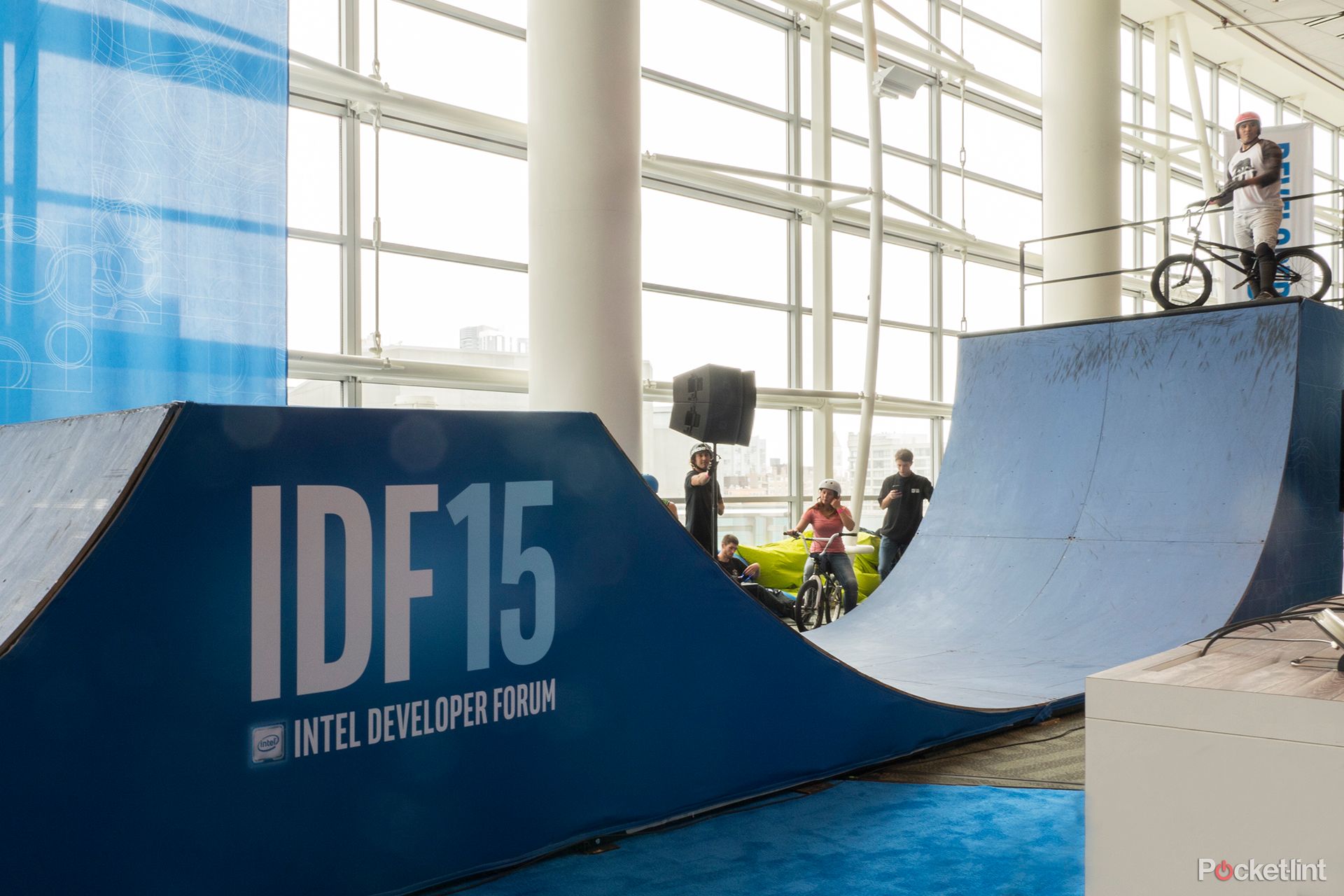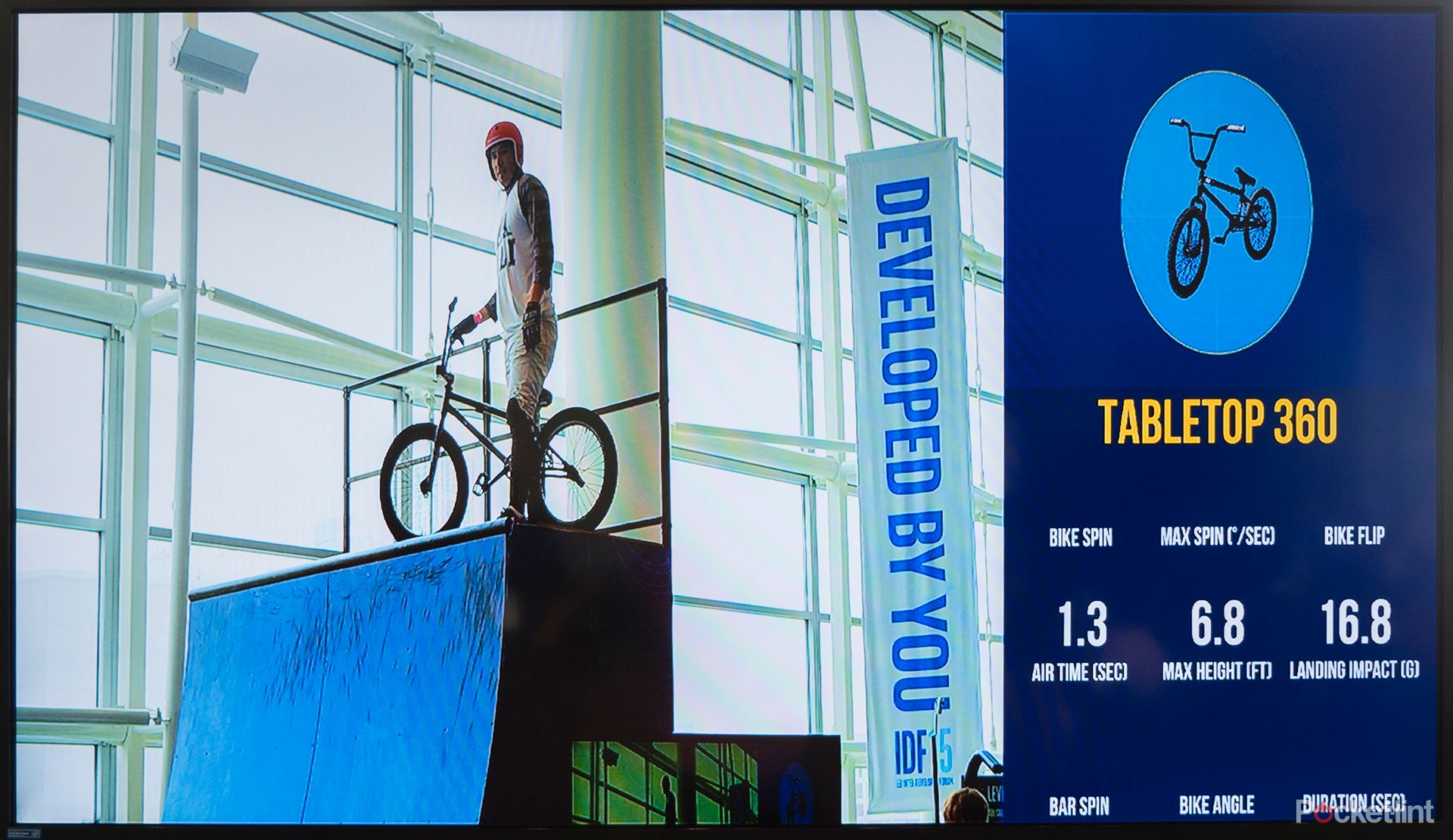At a developer forum you don't expect to watch BMX pros front-flipping over a ramp. But that's exactly what we were treated to on the third floor of the Moscone Centre in San Francisco at the Intel Developer Conference (IDF) 2015.
And not just "because it looks cool". Nope, Intel has injected its technology module, known as Curie, into BMX handlebars and seat posts so that tricks can be tracked in real-time, automatically recognised by the associated software, and then displayed in detail.
Imagine being at a BMX competition and watching on the big screen the exact tricks detailed as and when they happen, complete with airtime, how precisely the trick was pulled off, and all those extra details to help separate one competitor from another.
It could change the competition, remove some judging subjectivity and, well, it is pretty cool to have that visualised data on hand for records, personal bests and added kudos. It's like an extra focus point in addition to the usual slow-mo replay.
Intel Curie, the technology that makes this possible, is a module with a six-axis gyroscope, accelerometer and Bluetooth radio on board. Such a module means the precise rotation, speed and height of a rider can be calculated by drawing the "path" the sensor takes. The combination of these can be compared to a programmed database that recognises tricks; although it's not a full database at present, more a work in progress.
But Curie isn't a wear-it-on-your-head GoPro sized camera, it's the size of a button; it's small enough to fit on the tip of your finger. So on these teched-out BMX bikes it's invisible, non invasive and certainly doesn't affect the riders' abilities.
Intel is also working with skateboard and snowboard professionals with a similar setup, so there's potential for a huge swathe of action sports fans to benefit.
However it's only in the development stage for now. There's more work to be done for full accuracy, while support from the industry has yet to be fixed in place. At present there's no rider-worn module either, meaning your Superman trick might not be fully recognised at this stage.
So what's next? It sounds like a big-name sponsor or manufacturer in the sport needs to step in to get the ball rolling and then, who knows, we could see this technology gracing the score boards at competitions.
The next steps after that will be for the tech to trickle down into the consumer space; for it to become a product you can go and buy - whether to add-on or as a full teched-out bike/board with Curie implemented - so you coould document your personal trick-out endeavours. We could even imagine a scenario, like with current Garmin products, where all your data is auto-uploaded and socially shared in among the sports community for competitive social competitions worldwide. Now that would be extra cool.
So we're looking at you, sponsors. Intel's got the goods, the viewers have only got more to gain, and come 2016 it would be great to see Curie implemented at competitions. Albeit with a different name that sounds altogether less cute.


